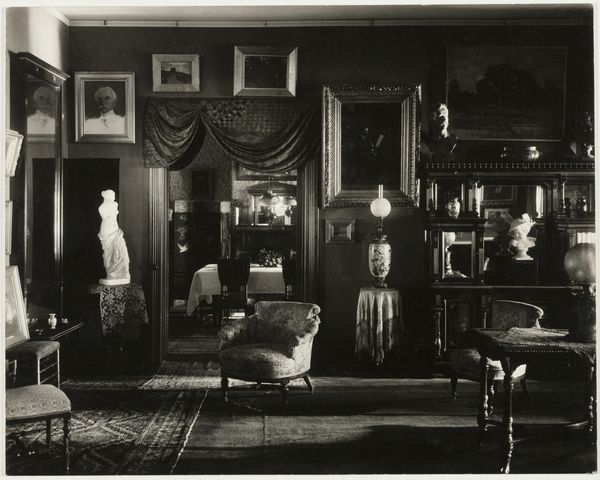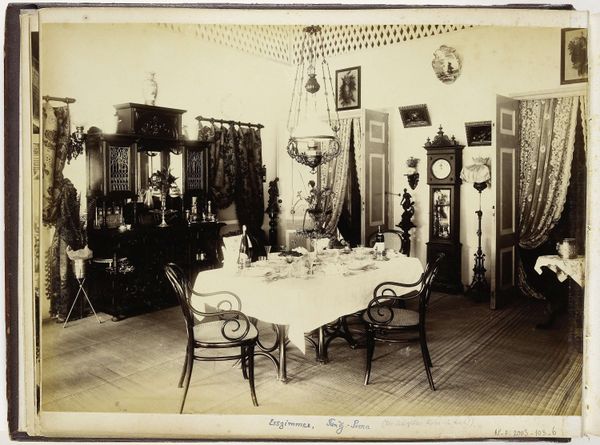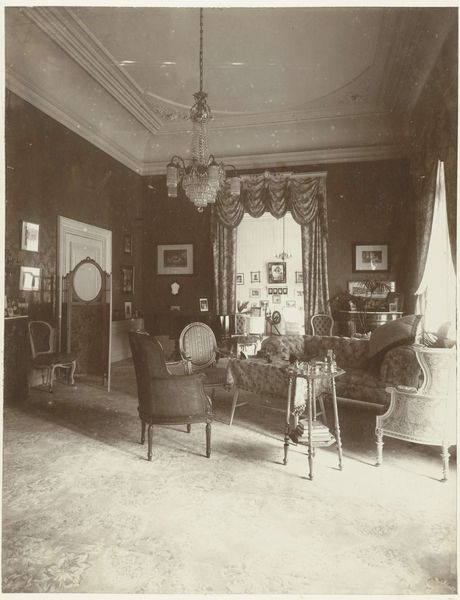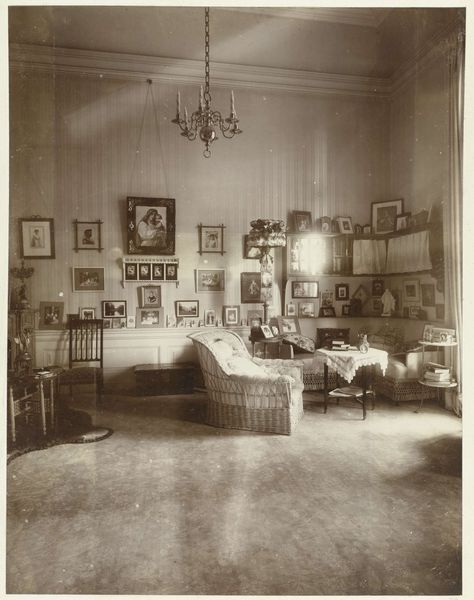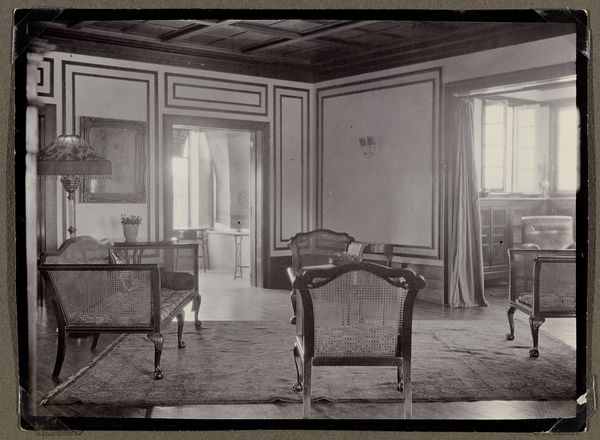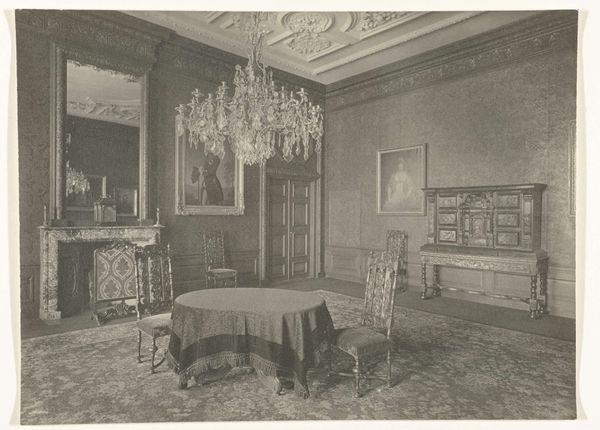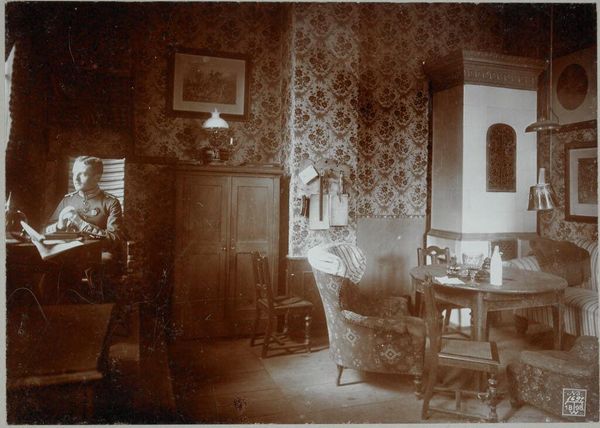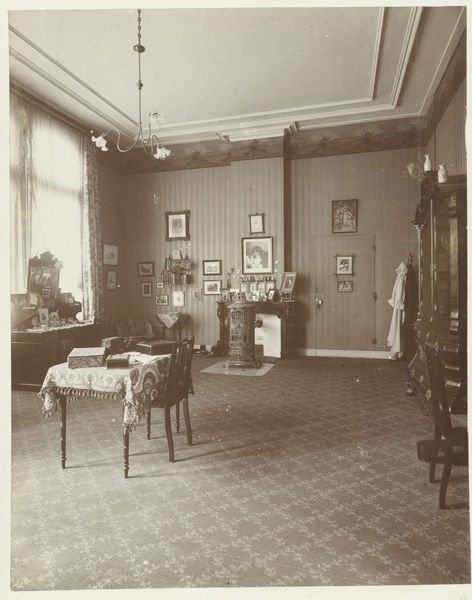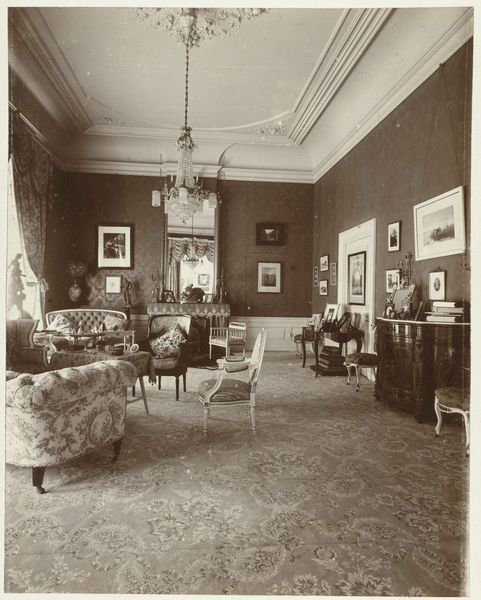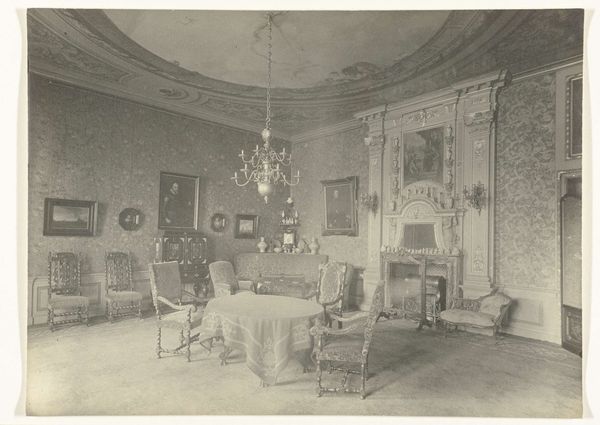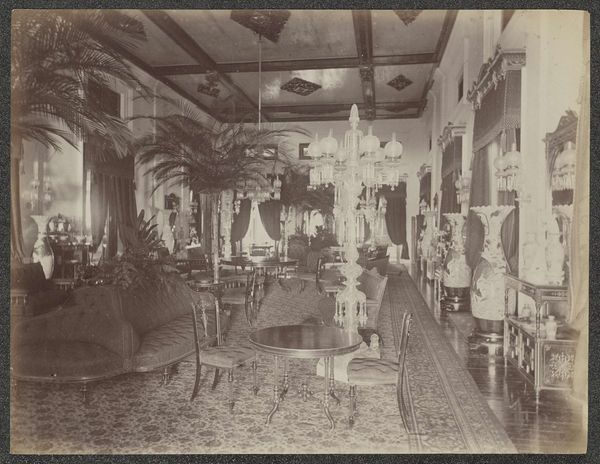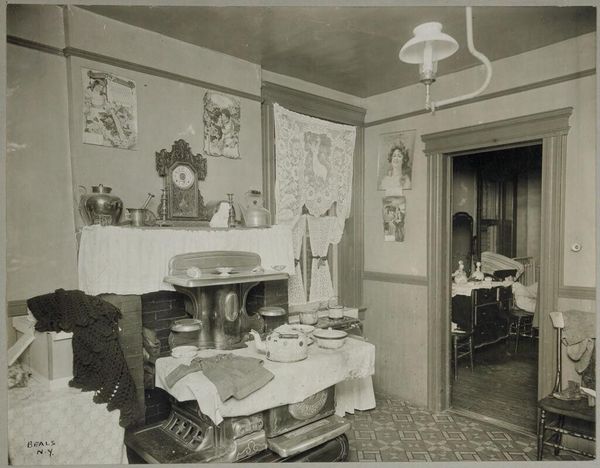
Huiskamer in dienstwoning van geneesheer Jacob Evert Wesenhagen 1900 - 1910
0:00
0:00
photography, gelatin-silver-print
#
portrait
#
pictorialism
#
arts-&-crafts-movement
#
photography
#
gelatin-silver-print
Dimensions: height 123 mm, width 175 mm
Copyright: Rijks Museum: Open Domain
Editor: We’re looking at "Huiskamer in dienstwoning van geneesheer Jacob Evert Wesenhagen," a gelatin-silver print photograph taken between 1900 and 1910. It depicts an interior, likely the living room of a doctor's residence. There's a stillness, an almost staged quality to the scene. What do you make of its historical context? Curator: This photograph is a fascinating window into the social landscape of the late 19th and early 20th centuries. Given the subject matter – the living room of a doctor – how does the composition reinforce or challenge the societal expectations of that time? Editor: I see the attention to detail – the lace curtains, framed portraits – suggesting a desire for respectability and a certain level of cultural aspiration. It’s quite bourgeois, isn’t it? Curator: Precisely! The "Arts and Crafts" movement, with its emphasis on handcrafted items, was a direct response to industrialization. These domestic details speak volumes. Note the strategic arrangement of portraits, books, and even the specific choice of lighting fixtures. How does this constructed domesticity perform for its intended audience? Editor: Perhaps the photo aimed to promote Wesenhagen as not only a skilled doctor but also a refined individual, fitting the cultural expectations. So, this "snapshot" is a consciously curated representation of social identity. Curator: Exactly. It speaks to the growing public role of imagery and how it was deployed to project social standing. We should also consider the institutional forces at play; How might photographic societies or exhibitions of the era have shaped the image's composition and subject matter? Editor: That's fascinating! I hadn't considered the potential influence of photographic societies on the *content* of the photograph itself, beyond technique. Curator: Seeing art within its historical and social context is key. By analyzing images like this, we gain a much richer understanding of our past. Editor: I totally agree! Thanks, it was so much more layered than I initially thought.
Comments
No comments
Be the first to comment and join the conversation on the ultimate creative platform.
